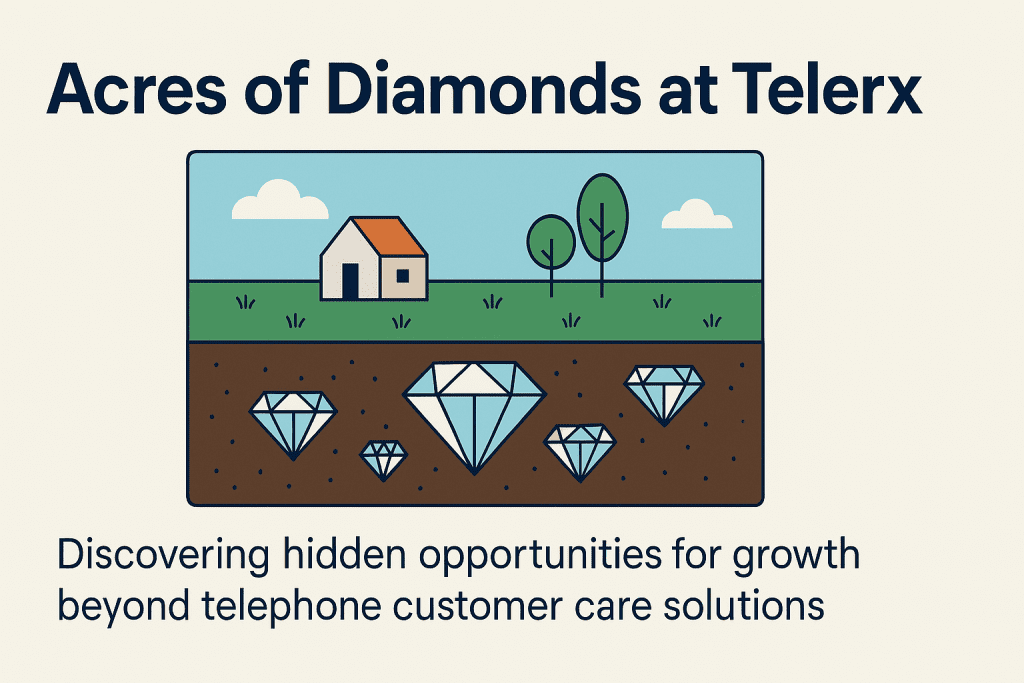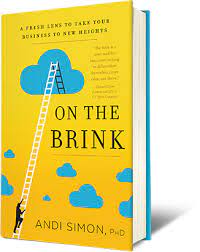When Linda Schellenger became president of Telerx in 2008, the company—then a $90 million contact center division of Merck—was facing a crossroads. After a series of lost RFPs and a slowdown in growth, her leadership team knew something had to change. But what?
That’s when Simon Associates Management Consultants was brought in with one mission: help Telerx find a new path forward. We were Blue Ocean Strategist, and Telerx was ready to rethink its business. The times were changing, and they needed too as well.
Briefly, What is Blue Ocean Strategy?
You can learn more about it on our website or in our white papers. While the research and the book came out in 2005, we have done 500+ workshops on the topic and have led lots of clients through the process. Blue Ocean is all about creating new markets, not competing in them. When you think Blue Ocean, you find ways to add value with innovation, and not simply duplicate the best practices of others. Once. you realize that there are lots of opportunities around you, you stop saying “We don’t do that,” and instead ask “How can we do that!”
Let me illustrate using Telerx as an example of how an anthropologist combines the social sciences with Blue Ocean Strategy to help a company create new markets effectively. You can also read the entire case study in our award-winning book “On the Brink: A fresh lens to take your business to new heights.”
Listening Differently: How Anthropology Helped Telerx See What It Was Missing
Our approach began with something simple but powerful—listening. We sat beside call center staff, hearing firsthand what customers were asking for and what issues weren’t being resolved. We asked: Who are these callers? What are they really trying to accomplish?
What we discovered was startling: the majority of the callers were over 50. They had once written letters, but now relied on phone calls. Meanwhile, younger generations—Gen Y and even many Gen Xers—weren’t calling at all. They preferred websites, forums, and social media. Telerx hadn’t been paying attention to this demographic shift, and it was costing them.
This insight was the first sign of untapped opportunity. Could Telerx meet people where they were—on Facebook, in chat boxes, or through intelligent content—rather than just on the phone?
Rethinking the Customer Care Industry
With the leadership team, we explored emerging trends shaping customer service. The shift toward digital engagement was undeniable. Blogging, online forums, and social networks were quickly becoming customers’ preferred platforms for problem-solving.
So, we asked: Should Telerx wait for clients to demand new services—or lead them there?
We hosted a two-day strategy retreat that revealed a harsh truth: the industry was becoming commoditized. Competing on price against offshore call centers was a losing game. But competing on innovation, engagement, and insight? That was a different story.
Exploring Possibilities: A Journey into New Markets
We sent the Telerx team out into the field to see with fresh eyes:
-
To prospects: Why weren’t they outsourcing? What were their pain points?
-
To partner companies: What innovations were emerging in customer care?
-
To universities and conferences: How were younger people solving problems?
-
To existing clients: What unmet needs were hiding in plain sight?
Their findings were illuminating.
Many companies weren’t choosing Telerx over another provider—they weren’t outsourcing at all. But that didn’t mean Telerx couldn’t offer them value. Its deep expertise in call center operations and technology could be monetized as training, consulting, or systems support. New revenue streams were just waiting to be discovered.
Younger consumers, digital by default, needed different channels. And Telerx had the potential to guide its clients into multi-platform, data-informed engagement strategies. Even more promising? The company already had the data—tons of it—but wasn’t yet turning it into insights.
Could Telerx become not just a service provider, but a thought leader in customer care?
Why Business Leaders Often Miss What’s Right in Front of Them
Telerx’s transformation didn’t come from a silver bullet. It came from doing what most companies overlook: paying attention to what was already there. The opportunities were, quite literally, in their backyard.
This reminds me of Russell Conwell’s famous “Acres of Diamonds” story—the tale of a man who sells his land to seek diamonds elsewhere, only to discover too late that his original farm was full of them.
In our work with clients, we often find the same pattern. Unmet needs. Untapped talent. Undervalued data. Hidden assets. Most business leaders don’t see them—not because they lack intelligence or experience, but because their brain won’t let them.
Your Brain Isn’t Built for Change
Here’s the thing: your brain wants to keep things as they are. It resists change and clings to what’s familiar. It takes real energy to learn, adapt, and innovate—and your brain doesn’t want to burn that fuel unless it has to.
Neuroscience confirms what anthropologists have long understood: we don’t see things “as they are,” but as we are. Our beliefs and assumptions shape our perceptions. And when the world changes faster than our stories can adapt, we miss the diamonds under our feet.
It’s All About Culture
That’s why any meaningful transformation must begin with culture. Corporate culture is not just “how we do things around here”—it’s the shared beliefs, behaviors, and values that shape every decision, from frontline service to executive strategy.
Changing a culture requires intention. It takes observation, conversation, and a willingness to rethink what’s possible. But it also requires a toolkit—and that’s where corporate anthropology becomes a powerful catalyst.
A Fresh Lens for a Fast-Changing World
At Simon Associates, we bring the tools of anthropology to help companies see, feel, and think in new ways. For Telerx, this meant recognizing hidden customer needs, reimagining value beyond call centers, and inspiring a team to embrace change.
If your company is stuck—losing clients, missing growth targets, or struggling to innovate—ask yourself: Are we overlooking our own acres of diamonds?
It might be time to see your business with new eyes.
The Takeaway: Culture Drives Growth
If you’re looking for new ways to innovate, engage customers, or change your company culture, it’s time to see your business differently. Corporate anthropology offers that lens—turning observation into insight, insight into strategy, and strategy into action.
It’s not just about understanding people. It’s about helping them—and your business—grow.
To read more about how Corporate Anthropology can help your business, pick up my award-winning book, “On the Brink: A fresh lens to take your business to new heights.” Available on Amazon.
If you would like to watch a podcast with Michael Tetreau about Corporate Anthropology and culture change, click here:
Just an update about Telerx: Telerx Marketing Inc. is no longer operating under its original name. In 2014, Telerx acquired C3i Solutions to enhance its pharmaceutical solutions services and global capabilities . Subsequently, the combined entity adopted the name C3i Solutions. In 2018, C3i Solutions was acquired by HCL Technologies, an Indian multinational IT services and consulting company.
From Observation to Innovation,
CEO | Corporate Anthropologist | Author
Simonassociates.net
Info@simonassociates.net
@simonandi
LinkedIn






